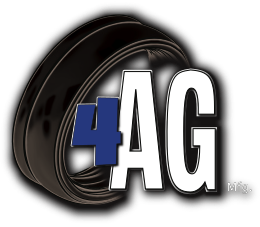Mastering No Till Planting: Closing Wheel Secrets to Know
"In the world of no till planting, closing wheels are the unsung heroes, ensuring the seeds' final embrace with the soil." This quote beautifully encapsulates the significance of closing wheels for planters in achieving successful seed placement and optimizing crop emergence.
As the backbone of no-till systems, these specialized wheels are pivotal in creating the ideal seed environment by sealing the seed furrow and establishing crucial seed-to-soil contact. By carefully selecting the right closing wheel setup and effectively adjusting them, farmers can enhance the efficiency and productivity of their planting operations. Keep reading to know the essential aspects of closing wheels for planters, including their setup, pros, cons, adjustment tips and their vital role in the no-till planting process.
Reinventing Planting Success: The Power of No-Till Closing Wheels
One of the critical components of a no-till planter is the closing wheel system. Closing wheels ensure proper seed-to-soil contact, prevent air gaps and promote uniform germination. These wheels act as a final touch, closing the seed furrow and minimizing exposure to the elements.
Closing Wheel Setup: The Good, the Bad and the Perfect Match
The choice of setting up closing wheels for planters can significantly impact the success of your no-till planting. Let's explore some common setups and their pros and cons:
Spiked Wheels: Spiked closing wheels penetrate the soil and provide excellent closing action. Their aggressive design is particularly beneficial in heavy residue or wet soil conditions. However, they may cause compaction in certain soil types and can be less effective in loose or sandy soils.
Rubber Wheels: Rubber closing wheels are renowned for providing excellent seed furrow closure while minimizing soil compaction. Farmers often favor rubber wheels for their versatility across various soil types. However, in heavy residue conditions, rubber wheels may struggle to clear the furrow adequately.
Mastering Precision: Expert Tips for Adjusting Closing Wheels for Planters
To optimize the performance of your closing wheels for planters, consider the following tips:
Soil Type Consideration: Different soil types require varying adjustments. Adjustments in heavier soils involve more aggressive wheel setups, while lighter soils may benefit from more passive configurations.
Field Conditions: Assess the field conditions before planting. Adjust the closing wheel setup, considering residue cover, soil moisture, and compaction levels.
Monitor Seed Depth: Regularly monitor seed depth to ensure that closing wheels are properly closing the furrow and maintaining consistent seed placement.
No-Till Gauge Wheels: Nurturing Planting Excellence
While closing wheels receive much attention, no-till gauge wheels are equally vital for a successful planting system. These wheels maintain consistent seed depth, preventing shallow or deep planting and ensuring uniform germination.
Gauge Wheel Mastery: Essential Considerations
Proper Adjustment: Set the gauge wheels to the desired planting depth, keeping in mind the recommended seeding depth for your specific crop.
Uniform Pressure: Maintain even pressure across all gauge wheels to ensure consistent seed depth. Adjust as needed to accommodate field conditions.
Perfect Seed Placement: Mastering Seed Depth Control
Maintaining consistent seed depth is crucial for maximizing germination rates and achieving uniform crop emergence. No-till farming offers several mechanisms for controlling seed depth, enhancing the precision of planting.
Depth Bands: Many no-till planters feature depth bands or seed tubes that guide the seed from the metering system to the furrow. Adjusting the depth bands allows farmers to fine-tune the desired planting depth for different crops.
Planter Downforce: Proper planter downforce is essential to ensure consistent seed placement. Adjusting the downforce settings on the planter enables farmers to accommodate variations in soil types, compaction levels and residue cover.
Balancing Act: Down Pressure for Optimal Planting
Achieving the optimal balance between soil penetration and compaction is critical for successful “no till” planting. Farmers must consider various factors when determining the appropriate down pressure for their planters.
Soil Moisture Levels: In wet soil conditions, reducing pressure can help prevent excessive soil smearing and compaction. Conversely, slightly increasing down pressure can enhance soil penetration in drier soils.
Residue Management: Higher residue levels can impede the planter's ability to penetrate the soil. Adjusting down pressure can help ensure proper seed-to-soil contact, even in fields with significant residue cover.
Experience the Cutting-Edge Innovations of 4AG's Planting Solutions
Are you ready to take your planting operations to new heights? Look to 4AG Manufacturing for quality planter tires that deliver unparalleled precision, efficiency and results. Take advantage of the opportunity to revolutionize the practices for your closing wheels for planters with our planter tires.

